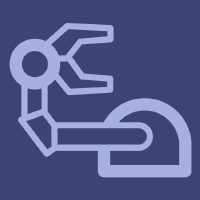Topic Editors


Advances in Mobile Robotics Navigation, 2nd Volume
Topic Information
Dear Colleagues,
Autonomous robots have become an enabling technology that has the potential to transform industry and society. The deployment of mobile robots requires endowing them with the ability to autonomously navigate within the target environment, which may be a priori unknown. Therefore, research activities are necessary to: (a) optimize the design of the robot (b) perceive the necessary information from the environment and (c) process this information and control the robot in such a way that it can cope with unexpected events in real working environments. The aim of this topic is to present current and innovative works which contribute to the improvement of the navigation abilities of mobile robots. Relevant topics include:
- Mechanical design of mobile robots;
- Sensing applications in mobile robots;
- Actuators in mobile robots;
- Localization of mobile robots;
- Control of mobile robots;
- Artificial intelligence in mobile robotics;
- Human–robot interaction;
- Applications of mobile robots.
Prof. Dr. Luis Payá
Prof. Dr. Oscar Reinoso García
Prof. Dr. Helder Jesus Araújo
Topic Editors
Keywords
- design of robots
- sensors in mobile robots
- mapping
- localization
- SLAM (Simultaneous Localization and Mapping)
- exploration of environments
- path planning
- vision-based navigation
- data fusion
- deep learning
- social robots
Participating Journals
| Journal Name | Impact Factor | CiteScore | Launched Year | First Decision (median) | APC | |
|---|---|---|---|---|---|---|

Actuators
|
2.6 | 3.2 | 2012 | 16.7 Days | CHF 2400 | Submit |

Applied Sciences
|
2.7 | 4.5 | 2011 | 16.9 Days | CHF 2400 | Submit |

Machines
|
2.6 | 2.1 | 2013 | 15.6 Days | CHF 2400 | Submit |

Robotics
|
3.7 | 5.9 | 2012 | 17.3 Days | CHF 1800 | Submit |

Sensors
|
3.9 | 6.8 | 2001 | 17 Days | CHF 2600 | Submit |

Inventions
|
3.4 | 5.4 | 2016 | 17.4 Days | CHF 1800 | Submit |

Technologies
|
3.6 | 5.5 | 2013 | 19.7 Days | CHF 1600 | Submit |

MDPI Topics is cooperating with Preprints.org and has built a direct connection between MDPI journals and Preprints.org. Authors are encouraged to enjoy the benefits by posting a preprint at Preprints.org prior to publication:
- Immediately share your ideas ahead of publication and establish your research priority;
- Protect your idea from being stolen with this time-stamped preprint article;
- Enhance the exposure and impact of your research;
- Receive feedback from your peers in advance;
- Have it indexed in Web of Science (Preprint Citation Index), Google Scholar, Crossref, SHARE, PrePubMed, Scilit and Europe PMC.


